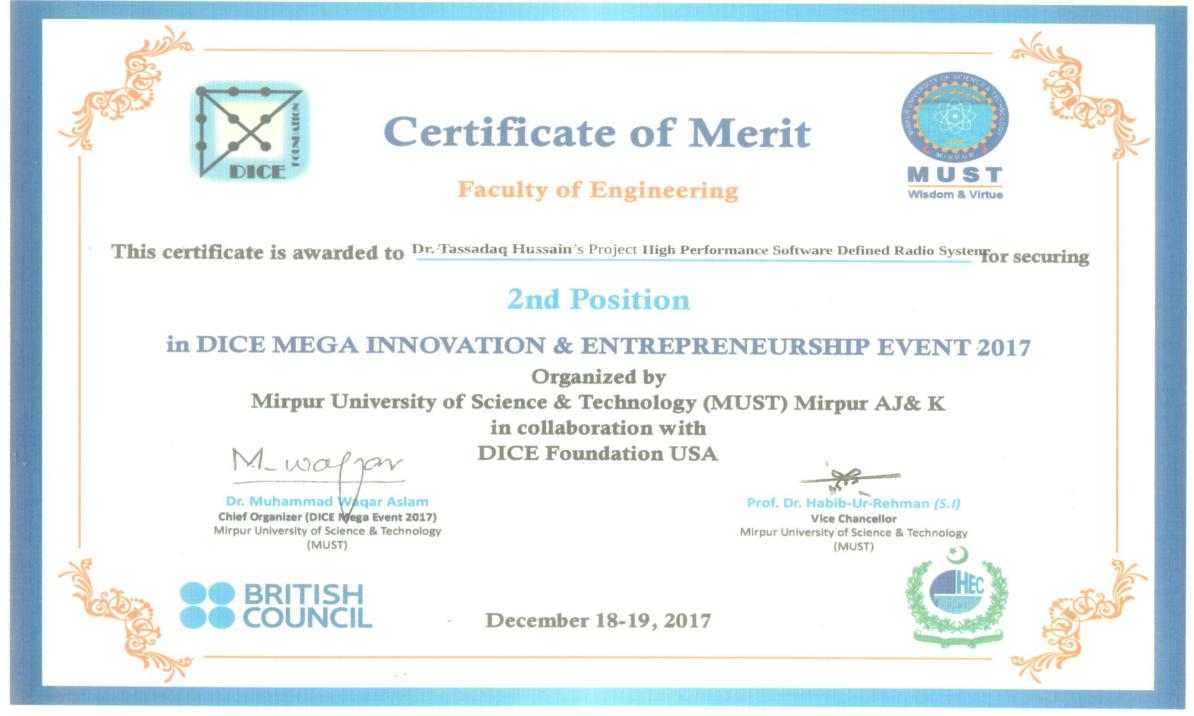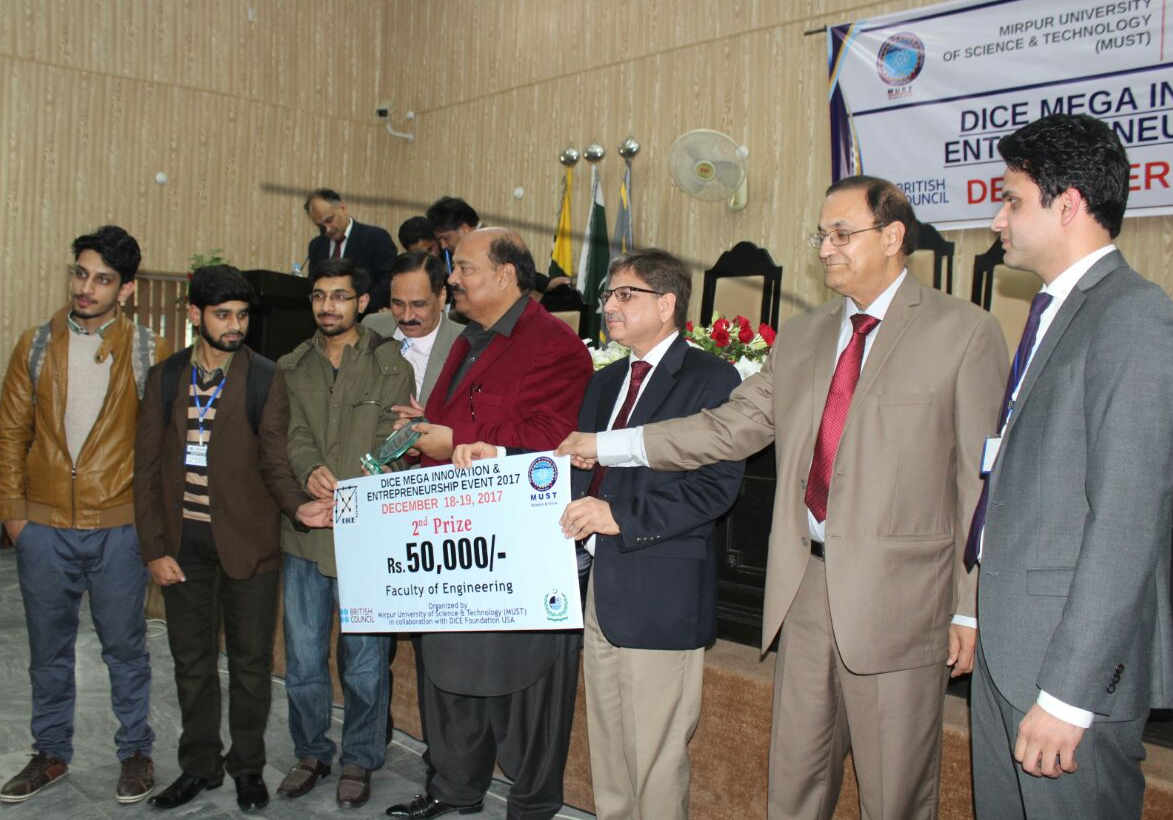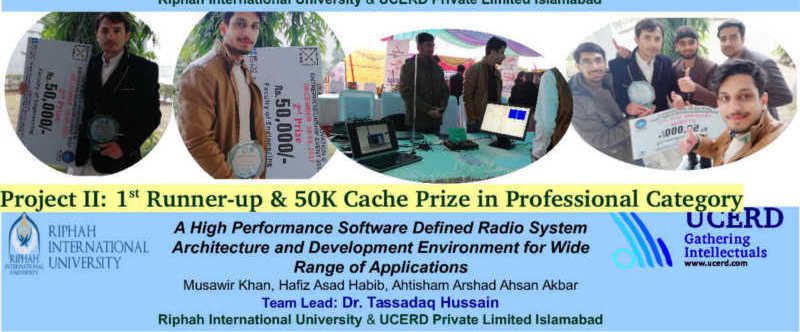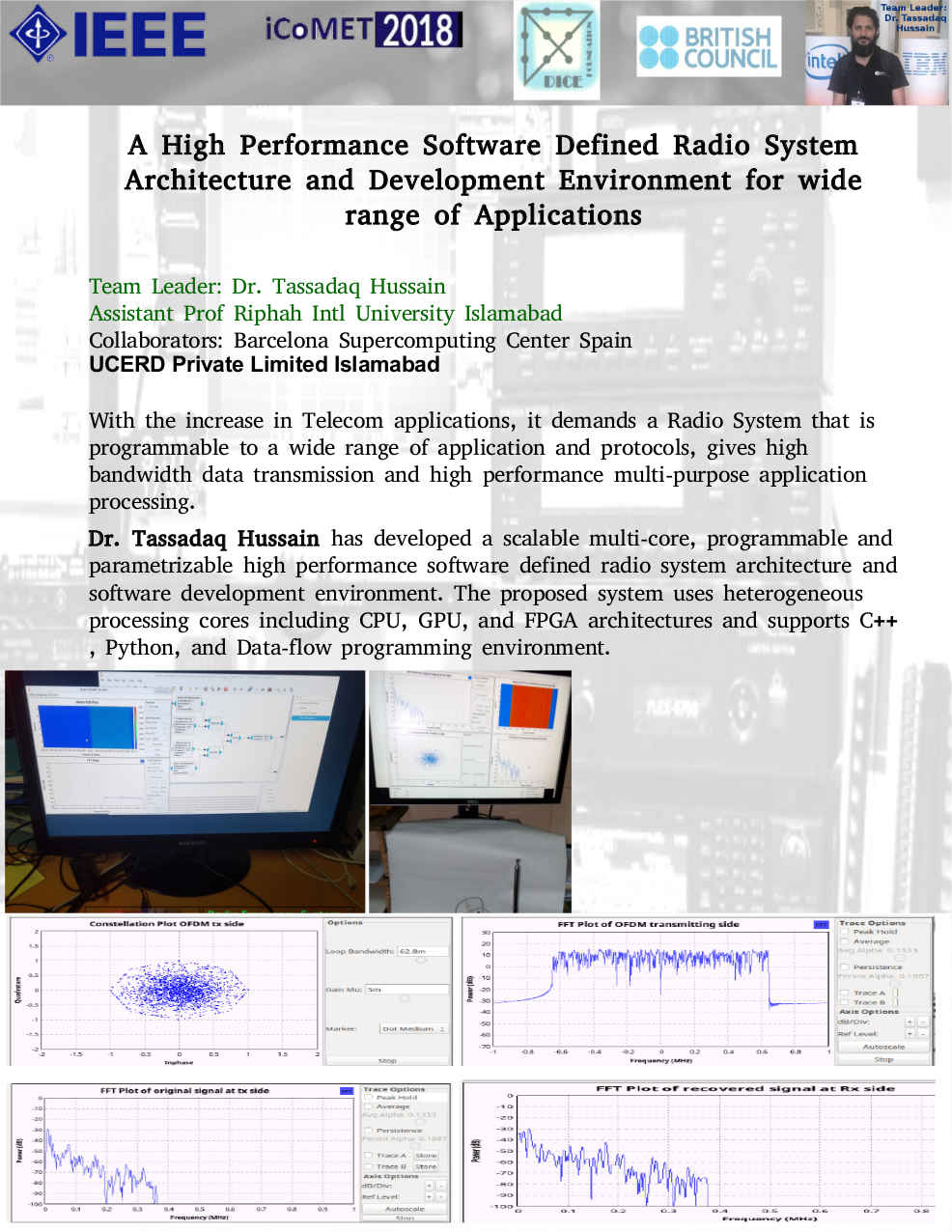Software Defined Radio Research Group (SDRRG)
UCERD Rawalpindi
Supercomputing Center
UCERD Murree
UCERD Pvt Ltd Islamabad conducts research on Software Defined Radio systems that transfer the information securely over a wide geographical area. The systems use a configurable Radio Frequency (RF) front-end, High Performance Computing (HPC) system and easy to use programming environment.
The SDR system (developed at UCERD) has been awarded by the DICE Foundation, published in IEEE conference, presented in multiple workshops, and granted patent number: 309/2018 from Government of Pakistan Intellectual Property Organization.
Software Defined Radio (SDR) is the technique of getting code as close to the antenna as possible. It turns radio hardware problems into software problems. The SDR technology is used for radio communication which implements the components required for the radio system with software or programmable hardware. The SDR system is defined as a radio in which some or all of the physical layer functions are programmed in the software. The digital waveforms are generated and converted to analog form using a Digital to Analog Converter (DAC) at the transmitter and at the receiver, they are converted to digital form using Analog to Digital Converter (ADC) and demodulated using the software. The SDR applications are implemented on a programmable digital system having, Digital Signal Processing, RISC general purpose processors, Programmable System on Chip (PSoC), Application Specific Accelerators, Field Programmable Gate Arrays (FPGAs), or specialized co-processors.
The Software Defined Radio Group (SDRG) motive is to develop novel single board computer architectures/platforms for software defined radio applications. The SDRG architectures perform synchronous multi-channel data for mitigating interference, advancing digital communication theory, developing power-efficient communications, and locating emitters dynamically.
Some of the most significant features of SDRG hardware architectures are mentioned below:
1) Use communication system resources efficiently under varying conditions.
2) Take advantage of underutilized spectrum. If one application is not using its spectrum, the hardware can ‘borrow’ the spectrum until the application starts using it again.
3) Upgrade or reprogram to support the latest communications standards.
4) Adapted to use in a different environment and for multiple applications.
5) Help to perform future research and development by providing an implementation of many different waveforms for real-time performance analysis.
The SDR targets General-purpose design suitable for any software-defined radio application, MIMO radio, Point-to-point communication systems, Femtocell/picocell/microcell, base stations, Wi-Fi, ISM, etc. applications.
The Software-Defined Radio (SDR) architecture (shown in Figure) is subdivided into six systems, the Back-end System, the Radio Frequency System, the Analog and Digital System, the Reconfigureable System, the High Performance Processing System and the Front-end System. The Back-end System deals with wide-band antenna which gives full coverage reception from 80MHz to 6GHz. The system uses interdependent antennas for shortwave and VHF. The Radio Frequency System serves as interface to the analog RF domain. The Analog and Digital System perform singal conversion and creates an interface between the digital and the analog world. The Reconfigurealbe System is used to perform data conversion in to different digital formate. FPGAs are used because it provide bit level data parallelsim. The High Performance Processing System is used to perform software signnal processing. The Front-end System deals with the user controlled pheriphrals such as keypad, LCD, mic, camera, etc. It takes the data from user and forwared it to processing system for communicaiton.
The SDRRG motive is to propose and develop different SDR designs. The group targets hardware architecture having the low-power, small footprint slandered high bandwidth RF power modules and high performance processing core. The SDRRG architectures are easy to program targets industrial and military applications.
The SDR system (developed at UCERD) has been awarded by the DICE Foundation, published in IEEE conference, presented in multiple workshops, and granted patent number: 309/2018 from Government of Pakistan Intellectual Property Organization.
Software Defined Radio (SDR) is the technique of getting code as close to the antenna as possible. It turns radio hardware problems into software problems. The SDR technology is used for radio communication which implements the components required for the radio system with software or programmable hardware. The SDR system is defined as a radio in which some or all of the physical layer functions are programmed in the software. The digital waveforms are generated and converted to analog form using a Digital to Analog Converter (DAC) at the transmitter and at the receiver, they are converted to digital form using Analog to Digital Converter (ADC) and demodulated using the software. The SDR applications are implemented on a programmable digital system having, Digital Signal Processing, RISC general purpose processors, Programmable System on Chip (PSoC), Application Specific Accelerators, Field Programmable Gate Arrays (FPGAs), or specialized co-processors.
The Software Defined Radio Group (SDRG) motive is to develop novel single board computer architectures/platforms for software defined radio applications. The SDRG architectures perform synchronous multi-channel data for mitigating interference, advancing digital communication theory, developing power-efficient communications, and locating emitters dynamically.
Some of the most significant features of SDRG hardware architectures are mentioned below:
1) Use communication system resources efficiently under varying conditions.
2) Take advantage of underutilized spectrum. If one application is not using its spectrum, the hardware can ‘borrow’ the spectrum until the application starts using it again.
3) Upgrade or reprogram to support the latest communications standards.
4) Adapted to use in a different environment and for multiple applications.
5) Help to perform future research and development by providing an implementation of many different waveforms for real-time performance analysis.
The SDR targets General-purpose design suitable for any software-defined radio application, MIMO radio, Point-to-point communication systems, Femtocell/picocell/microcell, base stations, Wi-Fi, ISM, etc. applications.
The Software-Defined Radio (SDR) architecture (shown in Figure) is subdivided into six systems, the Back-end System, the Radio Frequency System, the Analog and Digital System, the Reconfigureable System, the High Performance Processing System and the Front-end System. The Back-end System deals with wide-band antenna which gives full coverage reception from 80MHz to 6GHz. The system uses interdependent antennas for shortwave and VHF. The Radio Frequency System serves as interface to the analog RF domain. The Analog and Digital System perform singal conversion and creates an interface between the digital and the analog world. The Reconfigurealbe System is used to perform data conversion in to different digital formate. FPGAs are used because it provide bit level data parallelsim. The High Performance Processing System is used to perform software signnal processing. The Front-end System deals with the user controlled pheriphrals such as keypad, LCD, mic, camera, etc. It takes the data from user and forwared it to processing system for communicaiton.
The SDRRG motive is to propose and develop different SDR designs. The group targets hardware architecture having the low-power, small footprint slandered high bandwidth RF power modules and high performance processing core. The SDRRG architectures are easy to program targets industrial and military applications.

[1] Authors: Tassadaq Hussain, Musawir Khan, Mujeeb Ur Rehman, Wasim Akram, Khalid Anayat, Ahtisham Arshad , Ahsan Akbar, Asad Habib.
Title: A High Performance Software Defined Radio System Architecture and Development Environment for wide range of Applications
Conference: 2018 International Conference on Computing, Mathematics and Engineering Technologies – iCoMET 2018.
Publisher: IEEE Xplorer.
ISBN: 978-1-5386-1370-2.
Title: A High Performance Software Defined Radio System Architecture and Development Environment for wide range of Applications
Conference: 2018 International Conference on Computing, Mathematics and Engineering Technologies – iCoMET 2018.
Publisher: IEEE Xplorer.
ISBN: 978-1-5386-1370-2.

Team Leader :
Dr. Tassadaq Hussain
Members :
Musawir Khan
Mujeeb Ur Rehman
Wasim Akram
Ahtisham Arshad
Ahsan Akbar
Asad Habib.
Dr. Tassadaq Hussain
Members :
Musawir Khan
Mujeeb Ur Rehman
Wasim Akram
Ahtisham Arshad
Ahsan Akbar
Asad Habib.











